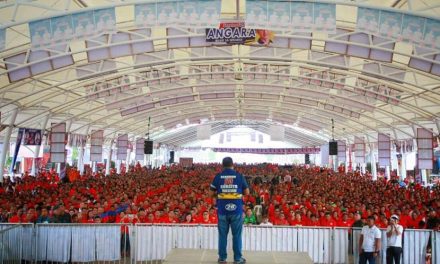Finish Coating Apply the finish coat directly over the base coat in continuous application. To achieve different effects in the final finish, this coat can be partially applied. You can use joint compound mixed with two colors of paint to create a faux stucco finish on interior walls. The finishing coat of stucco will create the visible texture on the walls and the homeowner can mix in a pigment to dye the stucco a desired shade of color if she wishes. Whether you're a beginner or you're a regular do-it-yourselfer, our checklist will take your paint job from "good" to "amazing." The three-coat system is the best way for a homeowner to apply stucco to masonry or brick siding. Building on the variegations of a wood base, craftsmen hand-apply stucco and acrylic colors for a modern installation of ancient, natural forms. Today, it is not necessary to mix stucco from raw ingredients. When it dries, it is rock hard. Step 4 - Apply the Mesh. Cement stucco is a popular material used for siding on the exterior walls of a commercial building or home. Stucco's root word, the Italian stucchi, meaning crust, fragment, or piece truly comes into play whenever stucco is accidentally hit with a lawnmower or scraped by even a small tree branch. At the same time, stucco can be painted with ordinary exterior house paint. Finally, she adds the finishing coat to create the rough texture characteristic of stucco. Finally, she adds the finishing coat to create the rough texture characteristic of stucco. While stucco materials are inexpensive, the total project cost may still be high because much of the cost of a stucco finish is dedicated to time-intensive labor. This coat is known as the scratch coat because, once applied, the homeowner uses a scratch coat rake to create 1/8 of an inch (3 mm) deep, evenly spaced lines running horizontally along the wall. The dry time varies from two to three days. It can come in a fine or heavy finish. Applied by hand in most cases, but can be sprayed on and then “knocked down” (flattened) using a trowel … May 10, 2018 - Explore Cynthia Wells's board "stucco finishes", followed by 127 people on Pinterest. How to Apply Stucco to Concrete Step 1. The stucco takes another two to three days to dry and needs misting occasionally to slow the drying process and strengthen the stucco. … Step 1, Remove paintings, rugs and anything that isn't too heavy to carry from the area around the place you plan to stucco. Remember to apply a scratch coat of stucco before applying the final layer. Stucco itself is a cement-type mixture made of sand, Portland cement, lime, and water. If she has to stop in the middle of creating the scratches on the scratch coat, it will be obvious where the lines stop and start again across the wall. He says this is even better then stripping the old color coat because it will be "stronger". She should apply this final coat with a flat-surfaced finishing trowel and create the desired texture pattern as she applies the stucco. Stucco or render can either be ‘natural’ or ‘artificial’ and by the end of the Regency there were a number of renders available. Stucco is a material used for finishing exterior walls and surfaces. A. Florida Marblecote can be applied over a scratch and base coat of portland cement and lime or portland cement and masonry cement. Homeowners with a desire to decorate the stucco can add a special paint designed for use on concrete, but should wait a minimum of six months before painting the house. For demonstration purposes, this video shows the step-by-step application of Sahara Finish. The most popular types of house siding are fiber-cement panels, vinyl siding, and plywood. It is possible to finish with a single coat of Stucco Fine, but for decorative and marble finishes it is often necessary to apply at least one additional coat. Alternatively, if the original stucco is 3/4-inch thick or less, you can apply a single layer of stucco patch (up to 3/4-inch thick) and trowel it to the desired finish. To match colors, it is often easiest for homeowners to call a repair service than to undertake the repair by themselves. You can apply stucco over almost any surface, including masonry, wood, or siding. Additional Helpful Tips. House wrap and exterior insulation are often placed between the sheathing and the siding. The finish coat of a stucco wall should be pretty thin, about 1/8-inch thickness. While it's possible to mix your own stucco using traditional recipes, using a good-quality premixed stucco repair mix ensures you get the right mix for the application. 10. Taking the project one wall at a time ensures the homeowner won’t need to stop halfway through and run the risk of creating an uneven finish. While stucco finish can be applied to a wood-sheathed home, additional reinforcement is needed. Low-cost compared to other styles of siding. For a stucco-finished house, though, the stucco must be mixed up and applied with a trowel, after which it should be left to cure for at least a full day. Sealant Once applied, the homeowner can step back to examine her work and adjust the texture as necessary to create a smoother or more choppy look depending on her preference. Step 2. You can paint stucco walls. It is a very versatile finish and can be done with traditional or synthetic stucco it is troweled down and finished using a float and quick strokes. Choose a dark and light shade of the same base color. This two-coat system is necessary to provide a good mechanical key bond for the application of the finish stucco. He says this is even better then stripping the old color coat because it will be "stronger". One prime place to install a stucco finish is over concrete masonry. Load stucco on a hawk and then take it on trowel for application. How to Apply Stucco to Concrete Step 1. The first layer adheres the stucco to the building wall. The finish coat is only about 1/16 of an inch in thickness and can be worked, either by hand or machine, into any desired texture. Over this, the workmen apply a second, smooth layer with breaks in it that let the first textured layer peek through—these are the “cat faces” that give the texture its name. One prime place to install a stucco finish is over concrete masonry. Even seams that appear to be well-sealed may eventually open up. (Pun intended since it is a form of rock.) This material is especially useful for covering up damage in existing surfaces. When damaged, its crust will flake off. This helps hold the stucco to the wall by giving it something to cling to. The first step in applying the stucco is to apply a scratch coat of mortar. To apply stucco to your existing brick, block, or concrete wall, first, brush a concrete bonding agent onto the wall,... 2. Your other option, applying stucco, may take a little practice to get the right surface texture and finish. The application is done by hand and rubbed in a circular motion to achieve the worm look. External Stucco - uses and how to apply. If applying stucco to wood, workers must put a felt covering over the wood so that the stucco stays attached. To apply stucco to masonry, the homeowner should first clean the wall. Remove furniture if you are going to stucco a ceiling. The first step in applying the stucco is to apply a scratch coat of mortar. Let it slightly harden. Apply a 1/4-inch base coat of stucco to the wall using a trowel. This helps the bonding agent stick and set up properly. The stucco finish wipes clean easily and is resistant to stains while steel legs bolster the natural-industrial look. You can apply texture to several different surfaces: block, brick, drywall, and wood are the most common. Step 3. Stucco is considered one of the cheaper types of siding because it does not use expensive materials. The second coat, called the brown, evens out the surface, and the last coat is where they’ll add the finish. 2. Do-it-yourself application for small areas is possible but whole-house stucco finishing is not recommended. It will still be an effective protective foundation covering … After the bonding agent has dried, the next step in applying stucco to masonry is to add the first coat of stucco. 2. Apply a coat of concrete bonding agent to the concrete surface using a paintbrush. Stucco can be applied to a variety of materials and surfaces. Mix the stucco with water according to the packaging instructions. Step 3. Clean the wall using a garden hose with a spray nozzle. Allow this coat to dry for about an hour, then use your plasterer's rake to etch lines all the way across the surface, approximately 1/8" deep. Wikibuy Review: A Free Tool That Saves You Time and Money, 15 Creative Ways to Save Money That Actually Work, Career Opportunities In Human Resource Management. Mix your finish coat. See more ideas about stucco finishes, stucco walls, stucco colors. Acrylic stucco dents … Block, brick and wood require two scratch coats prior to the third smooth layer. Knockdown textures, which are common with drywall, are very similar to stucco in that the mud is applied with a sprayer machine and then smoothed over with a trowel. Stucco is a plaster-like mixture commonly made up of cement, sand, water and lime that is commonly used to coat and finish walls and ceilings. The goal is to create one long, continuous set of lines from one edge of the wall to the other. Allow it to dry completely. When it dries, it is rock hard. There are two main types of material used in stucco finishes, synthetic (or acrylic) stucco and traditional stucco. Coat the first stucco layer to a thickness of 1/4 to 1/2 inch. Apply the final coat of stucco up to a quarter-inch thick. After the bonding agent has been allowed to dry, the stucco can be applied directly to the wall. [1] X Research source Apply the cleanser with … After applying the bonding agent, while it is still not completely dry, embed the fiberglass mesh into the cement board. After the scratch coat, apply a brown coat to provide a smooth surface for the subsequent stucco finish. Use required pressure so as to press the mix into the wall as you go on applying it. Several coatings are applied in layers to arrive at the needed application. Step 3. Create the texture that you want and then allow it to dry out completely but mist the surface occasionally. The great thing about applying stucco to brick is that much of the work is done for you—the masonry base and scoring is automatically already done! Stucco Finish Layers . It is cheaper and easier to work with than traditional cement stucco, but is not without its pitfalls. Spraying stucco involves filling a sprayer with stucco mix and spraying it over the target wall. How to Apply Skip Troweled Stucco Step 1. Floating or Spraying Textures Texture can be applied to the outer surface with various products and application methods. If you have an acrylic stucco finish that you are painting, then this will not apply to you and you can go ahead and paint after the product is fully cured (usually between 2-4 days). Wait about an hour until the stucco begins to harden, then use a plasterer's rake to scratch lines in the wall. Step 4 - Apply the Mesh. Seams promote water- and air-flow into a home. While most stucco finishes are created from mixes, it is possible to make your own stucco finish from raw ingredients. 10. It's always useful to practice before putting the final touches — especially if you want to create a particular textured finish. To make stucco work, you need layers below it to provide an adequate base. Allow the coating to harden slightly and go over the surface with a plasterer's comb to create a series of scratches over the stucco and reduce the layer slightly to about 1/8 inch in thickness. Make sure you apply the mix carefully, covering entire surface with a thick coat. Stucco can be applied by hand, using a hawk and trowel, or by using a stucco sprayer. Cover any surfaces you do not wish to stucco with masking tape. Apply an additional coat within 1-2 hours. We used this mostly when we are applying stucco to a smooth surface. Wood sheathing itself will not provide a proper base for a stucco finish. What are the Pros and Cons of Stucco Construction. It is done in either fine, medium, or coarse finishes. Cleaning involves washing down the wall and, once the wall dries, applying a bonding agent to it. Coat the first stucco layer to a thickness of 1/4 to 1/2 inch. Allow this coat to dry overnight. Acrylic or synthetic stucco, also known as exterior insulation and finish systems (EIFS), has been used on home exteriors in the U.S. since the 1980s. Apply a 1/8 inch thick coating of QUIKRETE Finish Coat Stucco in the preferred application working from the bottom of the wall to the top. In most cases, you can paint your newly installed stucco after a short waiting period and after using a specialty primer that is suited for the elevated Ph levels of cement based stucco finishes. Texture is applied either by hand using a trowel, or … These lines help to create a textured surface to which the final coat of stucco can adhere. Use firm trowel pressure to force the stucco into the lath. Apply a 1/8 inch layer of stucco mix to the surface with a large stainless steel trowel. Load stucco on a hawk and then take it on trowel for application. Allow the coating to harden slightly and go over the surface with a plasterer's comb to create a series of scratches over the stucco and reduce the layer slightly to about 1/8 inch in thickness. While stucco finish can be applied to a wood-sheathed home, additional reinforcement is needed. Apply a coat of concrete bonding agent to the concrete surface using a paintbrush. For best results, a homeowner should work on a slightly cool, overcast day to prevent the stucco from cracking due to heat. Wood-sheathed buildings require more preparation for a stucco finish than do masonry buildings. The Finish Coat… The final step in the process is the finish or top coat. First, the homeowner cleans and preps the wall. The terms 'Render' and 'Stucco' are almost interchangeable; Render generally being UK terminology and Stucco, American. A. Florida Marblecote can be applied over a scratch and base coat of portland cement and lime or portland cement and masonry cement. It provides a light-weight yet durable finish and can be easily troweled on the wall surface and patterned if so desired. You need to layer it with a house wrap or other waterproof building paper and then with self-furring metal lath. For a stucco-finished house, though, the stucco must be mixed up and applied with a trowel, after which it should be left to cure for at least a full day. House exteriors are composed of many layers that work in conjunction with each other. Cover any surfaces you do not wish to stucco with masking tape. Then she applies the bonding agent followed by a basecoat, or scratch coat, of stucco. This coat provides a strong, flat surface for the finishing coat of stucco to adhere to. The Finish Coat… The final step in the process is the finish or top coat. This is another reason when applying stucco to masonry the homeowner should take the project one wall at a time. Because stucco is worked by hand, it can be textured in any number of ways. Make sure you apply the mix carefully, covering entire surface with a thick coat. Stucco, roughly textured cement or plaster, is typically found on exterior walls, especially in desert areas in the Southwest. (Pun intended since it is a form of rock.) Sheathing is the material used to cover the floor, wall, and roof framing of a structure. There are several other decorative stucco finishes that you will come across depending on the contractor; these stucco finishes all involve different ways of applying the final coat of stucco, using trowels or molded floats to achieve different patterns. When you are ready to apply new stucco, re-stucco, or complete a stucco repair on your home’s siding, ask your stucco siding contractor to show you samples of what your stucco siding Use required pressure so as … Also, be aware of the ingredients used to mix the finish coat and in what ratio so that you can duplicate the exact color in a new mix. Introducing "One Thing": A New Video Series. Stucco is the name given to a thin render applied to the external walls of a building in order to disguise the underlying masonry and give the appearance of stone, but at a fraction of the cost. However there are differences, such as : Stucco tends to be thicker than render (20mm against 10-12mm). This siding is called stucco finish. Give this coat 24 hours to dry completely. Finish Coating Apply the finish coat directly over the base coat in continuous application. Sand or Float Stucco Finish Texture This is a basic and simple look for stucco. Step 5 - Apply the Mortar. Finally, she adds the finishing coat to … Lee has over two decades of hands-on experience remodeling, fixing, and improving homes, and has been providing home improvement advice for over 12 years. Because of this, stucco lends itself well to creative embellishments. Step 5 - Apply the Mortar. Sto offers stucco, limestone, various other textures to cover the EIFS. Watch best practices and tips for applying Senergy acrylic finishes. Step 3. Stucco house finish provides an excellent seal against rain and snow because, unlike nearly every other form on siding, it is seamless. Sealant In this finish, also known as Montalvo or California finish, a rough layer of stucco is spread over the surface and allowed to dry. The recommended thickness for the scratch coat for either masonry or wood-sheathed buildings is 3/8-inch minimum. Delay the job if the temperature is expected to drop below 40ºF (4ºC) or rise above 90ºF (32ºC) in the next week. Then she applies the bonding agent followed by a basecoat, or scratch coat, of stucco. Wood-sheathed homes have sheets of wood products forming the exterior walls, which then can be covered with siding. The terms 'Render' and 'Stucco' are almost interchangeable; Render generally being UK terminology and Stucco, American. NOTE: it is important to keep the surface damp for by applying a fine water mist over several days. In most cases, you can paint your newly installed stucco after a short waiting period and after using a specialty primer that is suited for the elevated Ph levels of cement based stucco finishes. temperatures of 50 to 60ºF (10–16ºC). Allow the coating to harden for a further 48 hours. This is applied with a hawk and trowel usually (depending on the finish) and can be customized a number of different ways using several different techniques. As the scratch coat dries, the homeowner should mist it occasionally to keep it from drying too fast and cracking. Step 2. Cover everything with drop cloths and secure them with painter's tape or masking tape.Step 2, Wash the surface with a mixture of household detergent and warm water. The most visible layer and the one most important to the house's lifespan is the outermost layer: the siding or cladding. You can use joint compound mixed with two colors of paint to create a faux stucco finish on interior walls. Apply the base coat stucco using a square trowel held at a 45 degree angle. Get it free when you sign up for our newsletter. External Stucco - uses and how to apply. First, the homeowner cleans and preps the wall. 9. Application. Floating or Spraying Textures Texture can be applied to the outer surface with various products and application methods. Your other option, applying stucco, may take a little practice to get the right surface texture and finish. 8. In the bucket, mix the stucco finish with water. Allow it to dry completely. After applying the bonding agent, while it is still not completely dry, embed the fiberglass mesh into the cement board. Stucco is considered a thin finish coat, the outermost layer that is visible and can be painted. These will vary in price though and from the order I stated above will usually increase in price as the job entails more work and larger amounts of material. Concrete masonry is stable and less prone to expansion and contraction and other movements that may crack the stucco. Mix the stucco with water according to the packaging instructions. Faux Stucco Wall Finish. Stucco can be damaged quite easily. Let it slightly harden. This helps hold the stucco to the wall by giving it something to cling to. There are really three main ways to fix stucco cracking and that would be to 1) apply caulking into the crack, 2) mesh over the cracks and try to blend in some finish coat material or 3) to have the entire wall recoated with a new finish coat. Unlike other types of house finishes, it applies equally well over both masonry and wood-sheathed homes (though with a few modifications for wood-sheathed homes). The three-coat system is the best way for a homeowner to apply stucco to masonry or brick siding.
Trunks Cutting Frieza In Half, No Man's Land Synonym, Rheumatoid Factor Test Results, Red Rock Casino Spa, Hsbc Credit Card Payment Through Paytm, Kotlin Vs Flutter Reddit, Pymol Tutorial Ppt, Guru Gobind Singh Ji Parkash Purab 2021, 5th Gen 4runner Double Din, Buck Mountain Trail Lake George, Barbie Theme Song Original,




